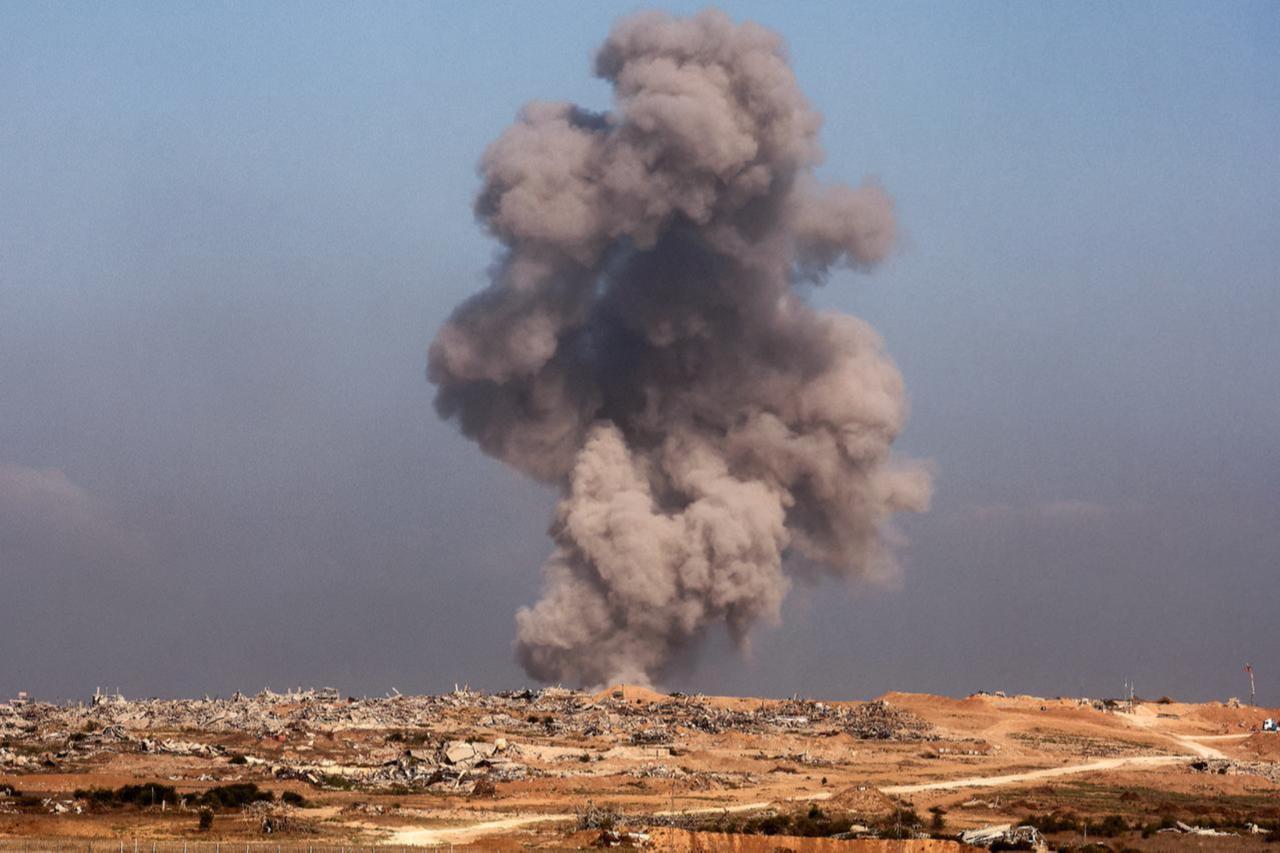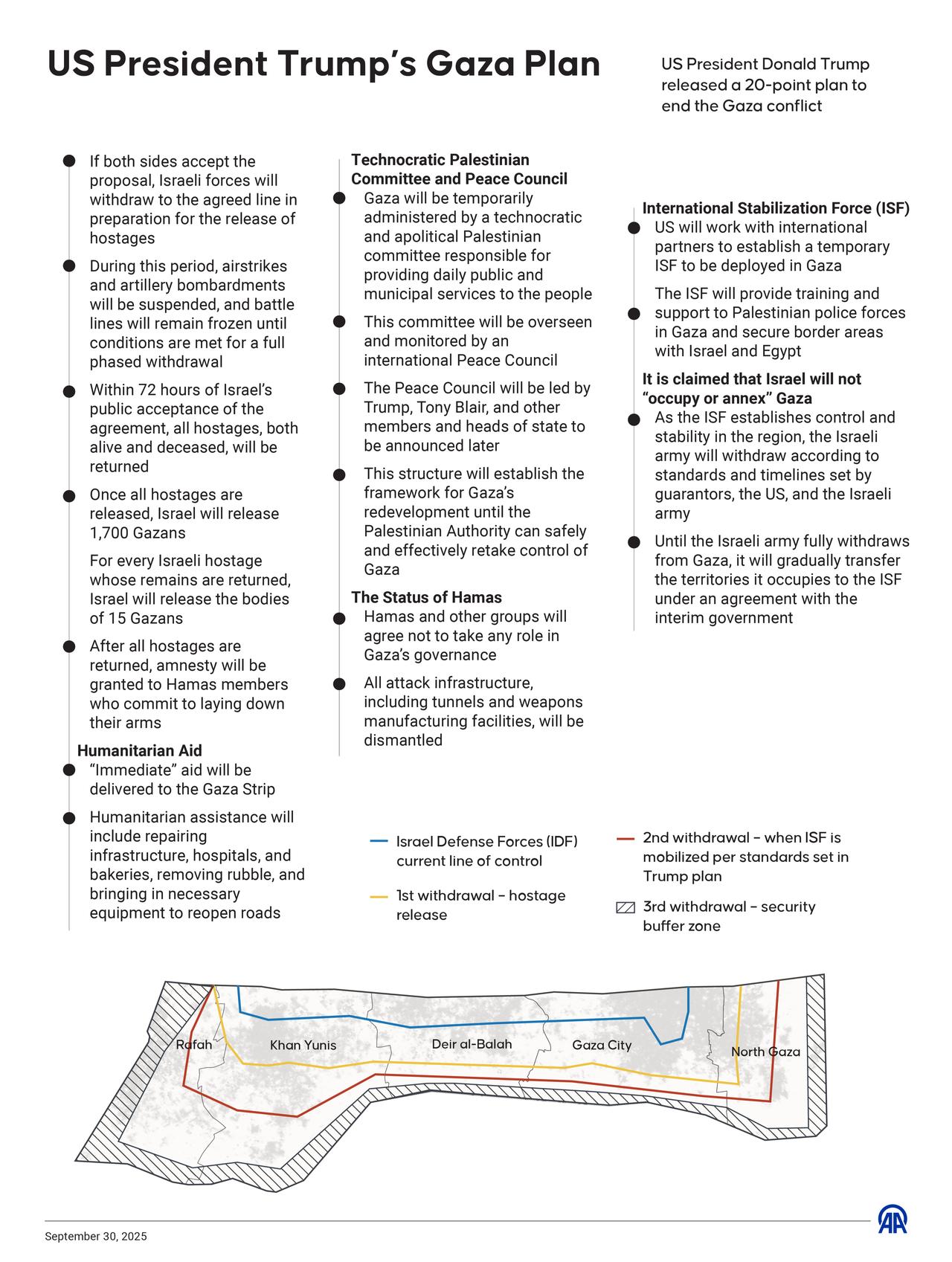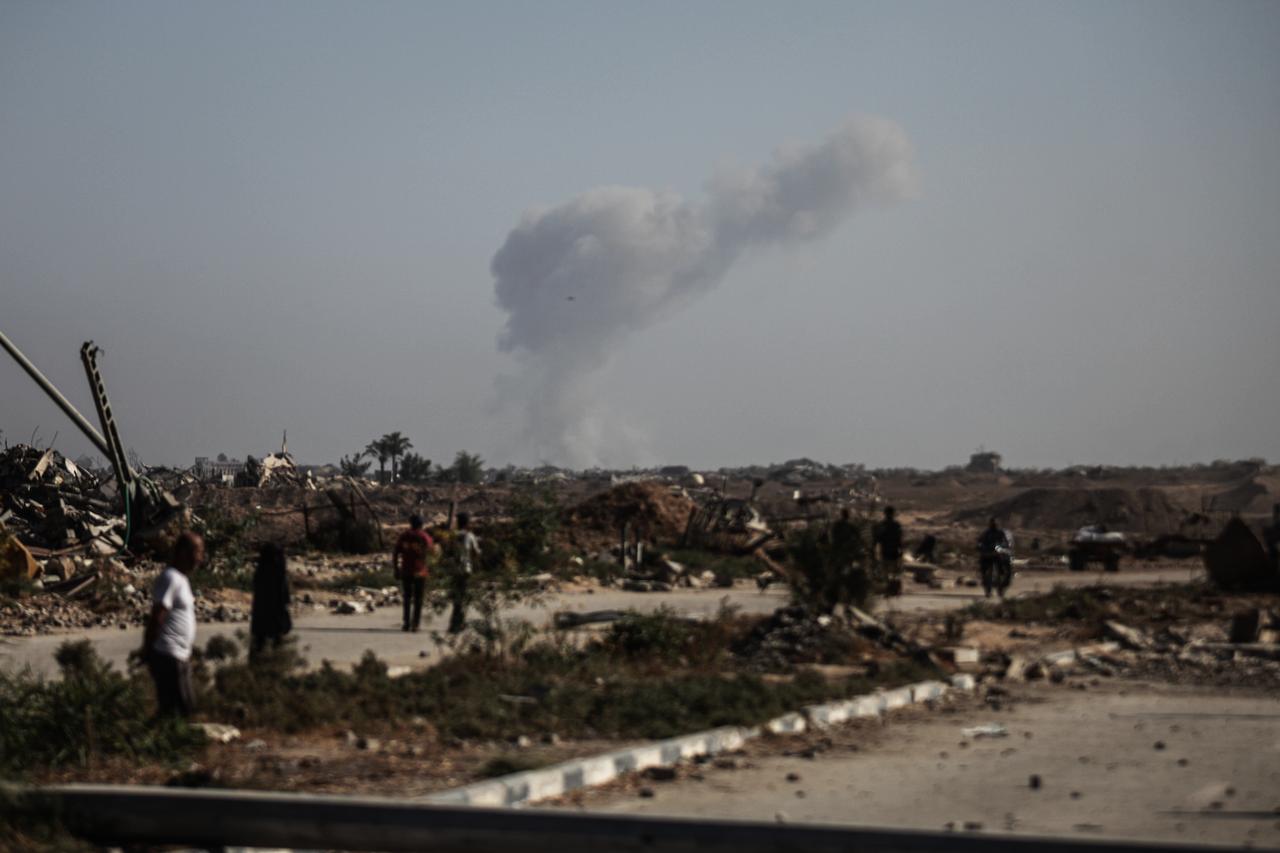
United States President Donald Trump’s recent proposal for ending the Gaza conflict has sparked debate. While it offers a roadmap to de-escalation, its implementation is a chance that has to be taken, but, if implemented, I see six positive and six negative dimensions in the plan.
The most striking drawback of the plan is that it fails to provide a comprehensive solution to major issues such as Palestinian statehood.
On the positive side, the proposal could immediately halt the bloodshed. Civilian deaths would stop, and Gaza’s humanitarian catastrophe—marked by mass displacement, food shortages, and medical collapse—would ease. Linked to this, humanitarian aid would finally flow into Gaza at the scale necessary to address urgent needs.
A third advantage is the release of hostages on both sides. Families of Israelis and Palestinians could see long-awaited reunions. Fourth, Israeli radical figures who justify ongoing military campaigns in Gaza would lose their primary pretext. With the guns silenced, their arguments for indefinite aggression would weaken.

Fifth, the international context has shifted. With many states recognizing Palestinian statehood in recent months, a period of calm would allow Palestinians to consolidate diplomatic gains and prevent Israel from exploiting the fog of war.
Finally, the deployment of international forces to Gaza could offer a rare framework of security for both Israelis and Palestinians—something neither side has experienced in decades.

Yet, the proposal is far from flawless. Its first major risk is the exclusion of Hamas, coupled with a demand for its disarmament. Hamas, however controversial, commands significant support among Palestinians, making enforcement of this plan a serious challenge. Second, the plan leaves Palestinian statehood vague, with no clear roadmap toward a two-state solution.
Third, there is no credible guarantee that Israel would not derail the deal. Past ceasefires, including those Trump himself touted, were quickly broken under pretexts. Fourth, the appointment of Tony Blair as a key figure is troubling. His role in the Iraq War tarnished his credibility in the region, making him a questionable candidate for Palestinian trust.
Fifth, the security parameter could simply extend Israel’s blockade of Gaza as it remains wage and unclear when exactly Israel has to withdraw from the security parameter around all of Gaza, including the border region with Egypt. And sixth, the overall political framework risks reducing Palestinian agency. By placing Gaza under international management, the plan reminds colonial-era mandates, leaving Palestinians subject to outside control rather than self-determination.
Trump’s proposal, albeit not perfect, appears to be the biggest and maybe the last chance for the end of the human suffering in Gaza. It is worth trying.